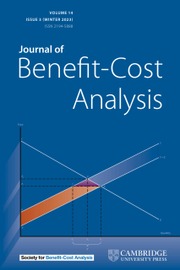Article contents
Potential Barriers to Improving Energy Efficiency in Commercial Buildings: The Case of Supermarket Refrigeration1
Published online by Cambridge University Press: 27 February 2017
Abstract
According to engineering analyses, energy-intensive commercial buildings have ample opportunities to reduce energy use while saving money, but many seemingly profitable strategies go unadopted. This study explores potential barriers to energy- and refrigerant-reducing investments in supermarket refrigeration. While supermarkets are large energy users, energy and refrigerant account for a relatively small proportion of expenditures. However, due to the intensely competitive nature of the industry, reducing refrigeration costs could have a sizable impact on supermarkets’ bottom lines. Given the scarcity of empirical data in this context, we conducted focus groups and interviews with U.S. supermarket representatives to elicit information about potential barriers to investment and used content analysis to qualitatively evaluate results. Participant statements suggest that the rate at which they adopt specific energy-reducing refrigeration technologies and practices correlates fairly well with estimates of expected payback. Uncertainty and imperfect information about the performance of new technologies, high opportunity costs of capital, and tradeoffs with other valued system attributes such as reliability and customer appeal were the most pervasive potential barriers discussed by participants, although split incentives between firms and contractors or employees also played a role for some firms. Our assessment is that these factors have moderately limited or slowed investments in energy-saving refrigeration technologies for many firms; only in the cases of uncertainty/imperfect information and split incentives between firms and contractors or employees are these barriers potentially indicative of market failures. In addition, in several instances we identify ways in which analysts could improve engineering-based net present value calculations to make them more consistent with actual firm decisions.
Keywords
Information
- Type
- Articles
- Information
- Copyright
- © Society for Benefit-Cost Analysis 2017
Footnotes
Focus groups and interviews were conducted with contractor support funded by the U.S. Environmental Agency. The authors thank Tara Hamilton and William Prindle (ICF International); Jane Peters and Bobbi Tannenbaum (Research in Action); Food Marketing Institute; National Grocers Association; Ohio Grocers Association; and Keith Sargent (EPA) for help coordinating and conducting focus groups and interviews. The authors also thank Keilly Witman, Tom Land, and Ron Shadbegian for their helpful input. All opinions expressed in the paper are those of the authors and do not necessarily reflect the views or policies of the U.S. Environmental Protection Agency.
References
- 7
- Cited by

